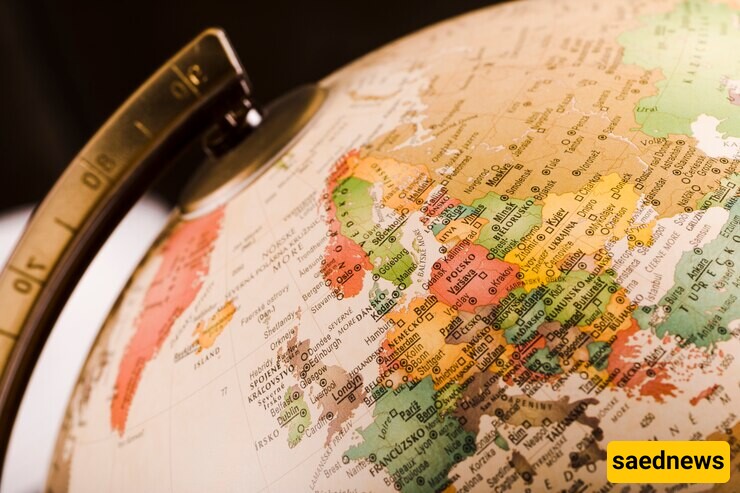SAEDNEWS: Though small in size, the world’s tiniest countries pack a punch with their unique histories, cultures, and quirks. Learn fascinating facts about these miniature marvels that defy expectations.


Measuring only 44 hectares (110 acres), Vatican City holds the title of the smallest country on Earth. Situated in the heart of Rome, it is home to some of the most renowned landmarks in the world, including St. Peter’s Basilica and Michelangelo’s Sistine Chapel.
Despite its size, Vatican City wields global influence as the spiritual center of the Roman Catholic Church. Its economy thrives on tourism and the sale of collectibles, including stamps. Its iconic Swiss Guard, dressed in traditional Renaissance-style uniforms, ensures the Pope’s safety and adds a touch of pageantry to this tiny yet powerful state.

Monaco covers just 2.02 square kilometers (0.78 square miles), yet it is synonymous with wealth and opulence. Perched on the French Riviera, this microstate is famed for the Monte Carlo Casino, luxurious yachts, and the high-octane Monaco Grand Prix.
Monaco has the world’s highest population density and one of the longest life expectancies, attributed to its high standard of living and excellent healthcare. An interesting quirk of this glamorous nation is that its citizens are forbidden from gambling in its casinos—a privilege reserved exclusively for tourists.

Spanning just 21 square kilometers (8 square miles), Nauru is the world’s smallest island nation. Located in the Pacific Ocean, it was once one of the richest countries per capita due to its vast phosphate reserves. However, after exhausting this resource, Nauru faced economic decline and environmental degradation.
Though it now grapples with significant challenges, Nauru’s story remains a remarkable example of how a tiny island once became an economic powerhouse.

Tuvalu, a collection of nine small islands in the Pacific, occupies only 26 square kilometers (10 square miles). It is among the most vulnerable nations to the impacts of climate change, with rising sea levels threatening its very existence.
Despite its challenges, Tuvalu generates income through its .tv internet domain, popular with streaming and media companies worldwide. This demonstrates the nation’s resourcefulness in turning a modern asset into a significant source of revenue.

Enclosed within Italy, San Marino spans 61 square kilometers (24 square miles) and is one of the world’s oldest republics, established in 301 CE. Its medieval architecture, including the iconic Three Towers on Mount Titano, attracts history enthusiasts from around the globe.
San Marino has maintained its independence for centuries, a remarkable feat given its size and location. Visitors also enjoy its tax-free shopping opportunities, making it a charming blend of historical and modern allure.

Liechtenstein, nestled in the Alps between Switzerland and Austria, covers just 160 square kilometers (62 square miles). Known for its breathtaking scenery and thriving financial sector, this small nation enjoys one of the world’s highest GDPs per capita.
Liechtenstein is so tiny that it once accidentally “invaded” Switzerland during a military drill—a humorous reminder of its modest scale. Despite its small size, it stands as a beacon of prosperity and stability.

Palau, an archipelago of 459 square kilometers (177 square miles) in the Pacific, is a haven for marine enthusiasts. Its crystal-clear waters, vibrant coral reefs, and Jellyfish Lake attract divers and nature lovers from all corners of the world.
Palau is also a leader in marine conservation, with much of its waters designated as a protected sanctuary. The country’s commitment to preserving its natural beauty is a model for sustainable development.

Andorra, located in the Pyrenees Mountains between Spain and France, spans 468 square kilometers (181 square miles). Known for its ski resorts and duty-free shopping, it draws millions of visitors each year.
Unique in its governance, Andorra is ruled as a co-principality, with leaders from both France and Spain serving as its heads of state. This tiny nation has retained its independence and identity for centuries, making it a fascinating mix of modernity and tradition.

Malta, a small archipelago covering 316 square kilometers (122 square miles), is steeped in history. From ancient temples to medieval fortresses, the country boasts a rich cultural heritage. Its capital, Valletta, is a UNESCO World Heritage site, reflecting its historical significance.
Strategically located in the Mediterranean, Malta has been a prized possession for empires throughout history. Today, it thrives as a tourist hotspot and filming location for major productions, showcasing its scenic beauty and historical charm.

The Seychelles, an Indian Ocean archipelago, spans 459 square kilometers (177 square miles). Renowned for its pristine beaches, lush landscapes, and unique wildlife, it is a top destination for luxury travel and eco-tourism.
The Seychelles is committed to sustainability, preserving its fragile ecosystems while promoting tourism. Its granite and coral islands make it a geologically unique wonder of the world.
The world’s smallest nations may lack landmass, but they make up for it with cultural richness, historical significance, and innovative approaches to modern challenges. From ancient republics to tropical paradises, these microstates prove that greatness isn’t measured in square kilometers. Their stories inspire wonder and admiration, showcasing that even the tiniest countries can leave a lasting impact.

